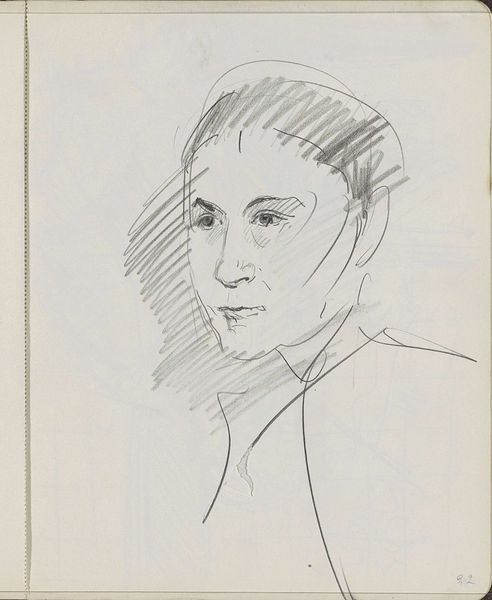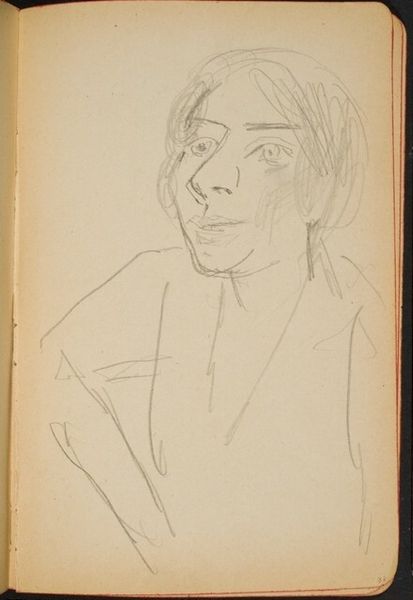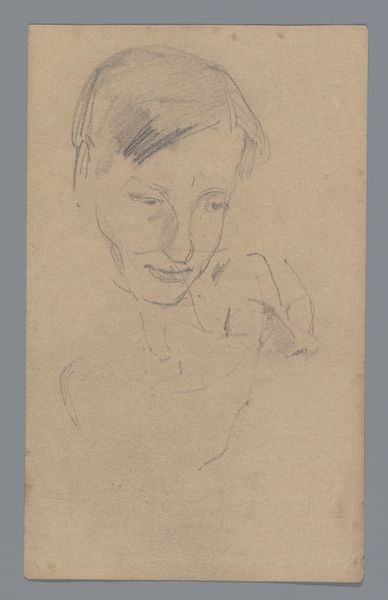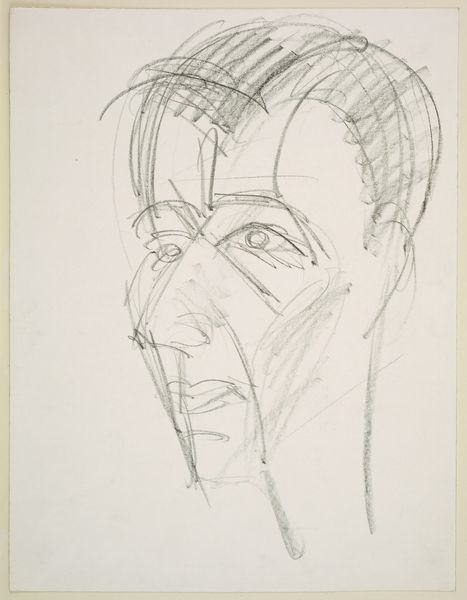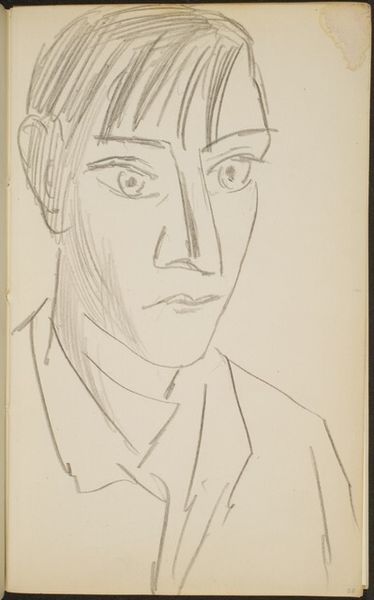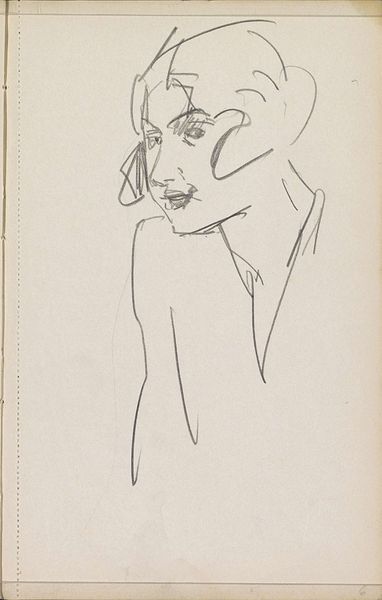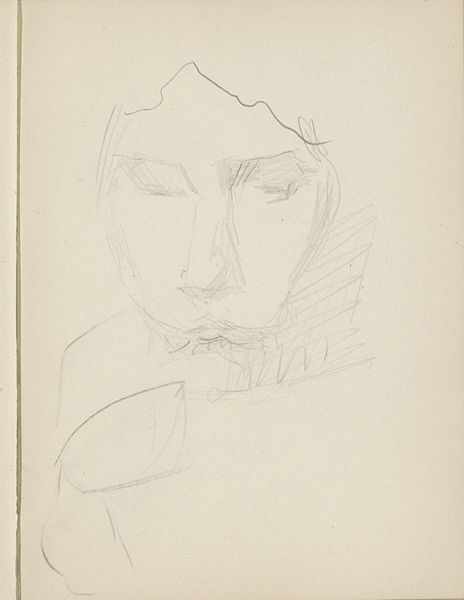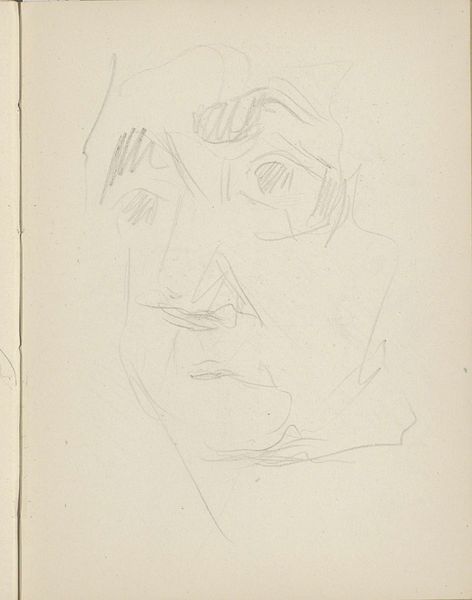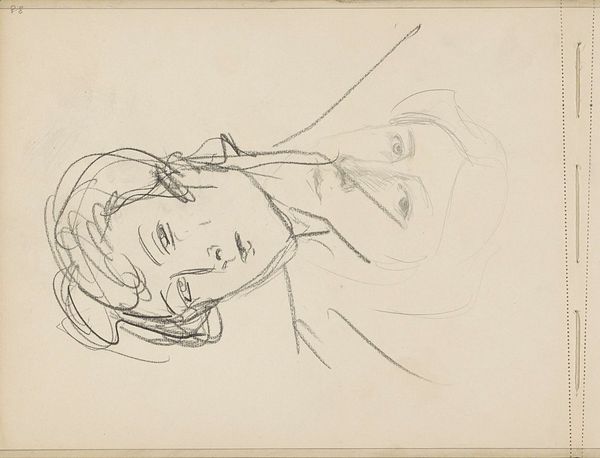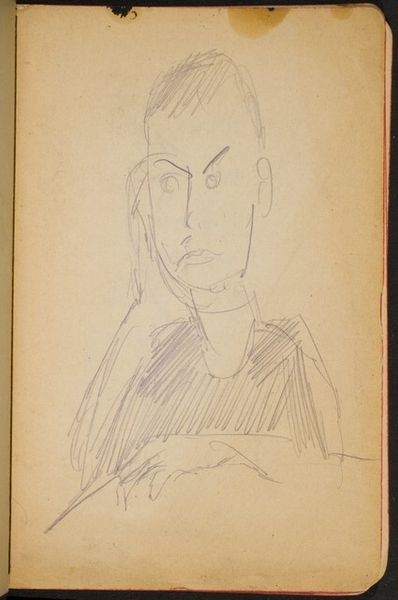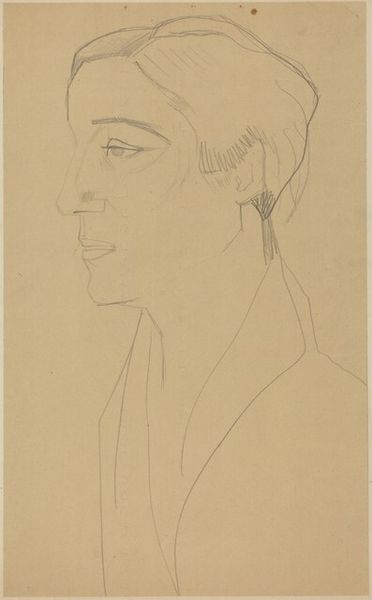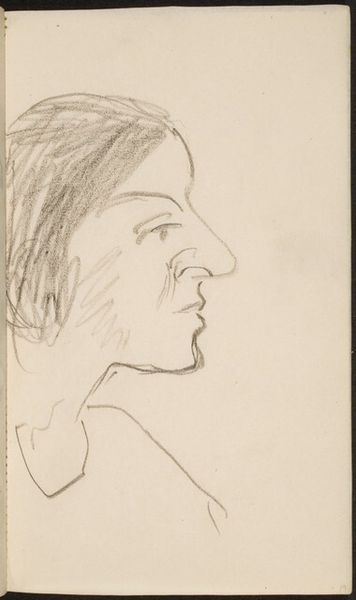
drawing, pencil
#
portrait
#
drawing
#
imaginative character sketch
#
figuration
#
personal sketchbook
#
idea generation sketch
#
character sketch
#
ink drawing experimentation
#
pen-ink sketch
#
pencil
#
line
#
sketchbook drawing
#
portrait drawing
#
sketchbook art
#
modernism
#
initial sketch
Copyright: Rijks Museum: Open Domain
Curator: This is Isaac Israels’ "Hoofd van een man of vrouw", dating from the 1920s, a work on paper, employing pencil and ink, currently held in the Rijksmuseum. It's interesting how freely he’s rendered the form. What are your initial impressions? Editor: Angular. Stark, even. I'm struck by the almost clinical detachment in those lines; it feels like the subject is being observed more than portrayed, like an insect pinned under glass. But I’m also really into its unfinished quality. Curator: Yes, the directness is key. This aligns with a modernist tendency to capture fleeting moments and raw expressions. The use of line emphasizes immediacy and process over detailed representation. One could also argue there’s an androgynous quality at play. Does this evoke familiar symbols or figures? Editor: I guess, subconsciously, there is something classical about it, like a faded Roman bust dug up from some forgotten archive. Those eyes though. Intense. Remind me of photographs from that era. It feels modern and almost spooky to be looked at this way by this subject from the past. Like they’re saying something they shouldn’t, and you are not supposed to see this part of them. Curator: Fascinating perspective! Consider the visual language—the loose, exploratory lines hinting at psychological depth. Israels was moving away from purely academic depictions to engage with capturing more subjective elements. There is a similar sketch of his around that time of Mata Hari, perhaps an influence, although this subject remains nameless. Editor: It's true. It dances on a threshold, really. What would you want people to take away after viewing it? Curator: Beyond just aesthetic appreciation, I would want them to recognize that images transmit cultural memory and social attitudes; this one echoes how artists were investigating the construction of identity and challenging traditional methods in art and the shift happening after the First World War. It’s not simply about seeing a face. It’s about seeing a mind reflected on paper, a window into the artist’s process, but also our process of seeing. Editor: Exactly. For me, that open-endedness is its greatest strength. It whispers rather than shouts.
Comments
No comments
Be the first to comment and join the conversation on the ultimate creative platform.
